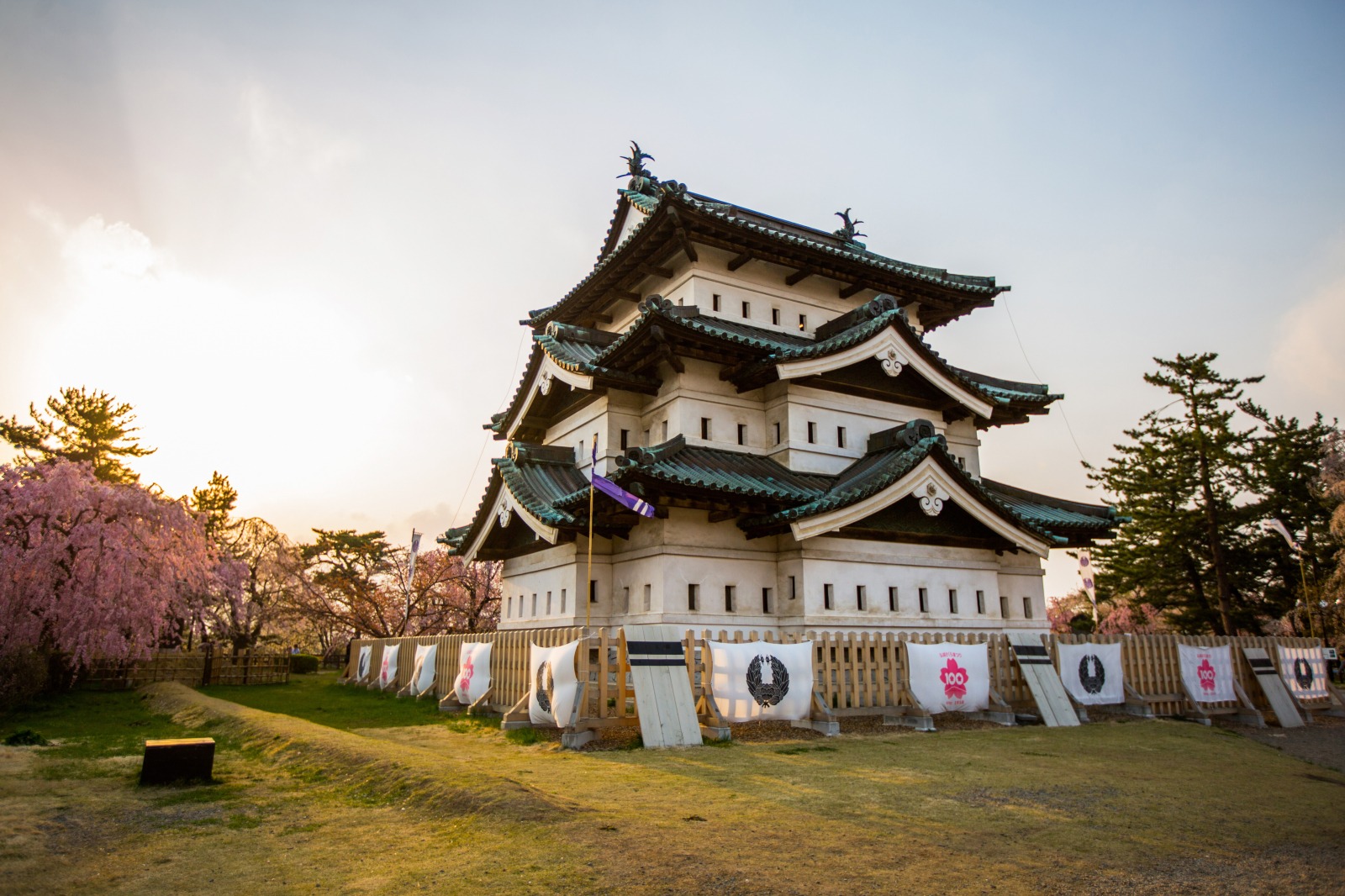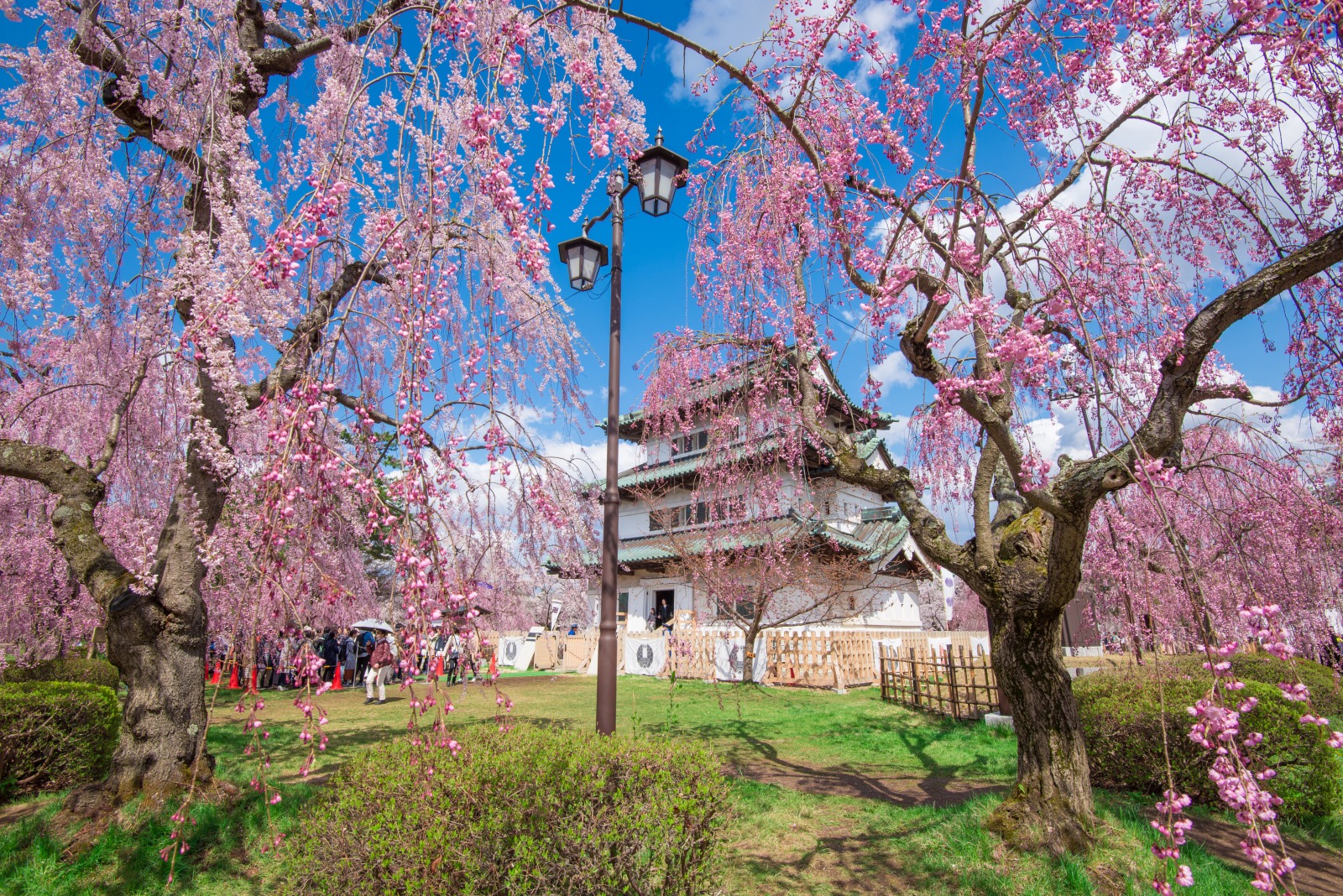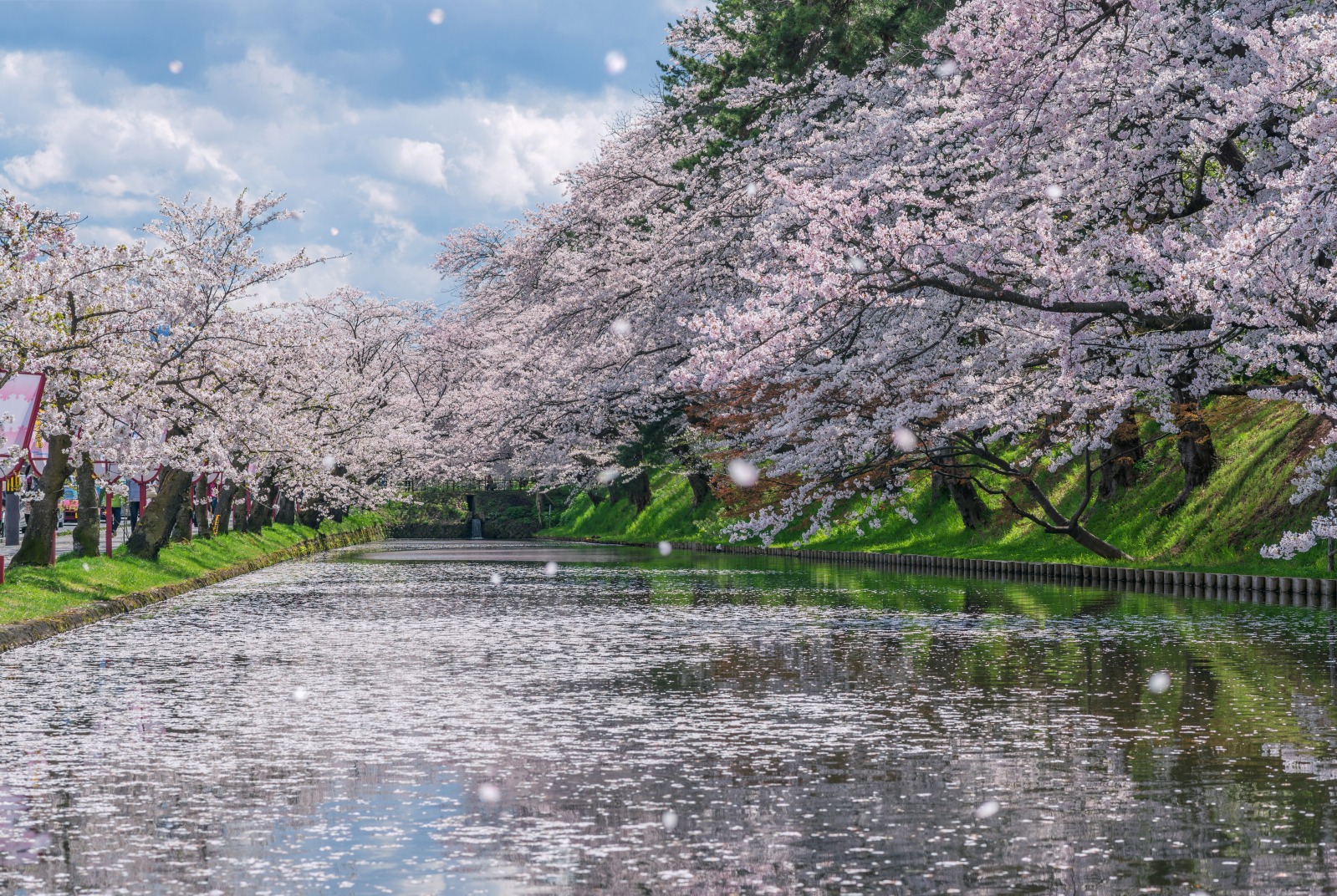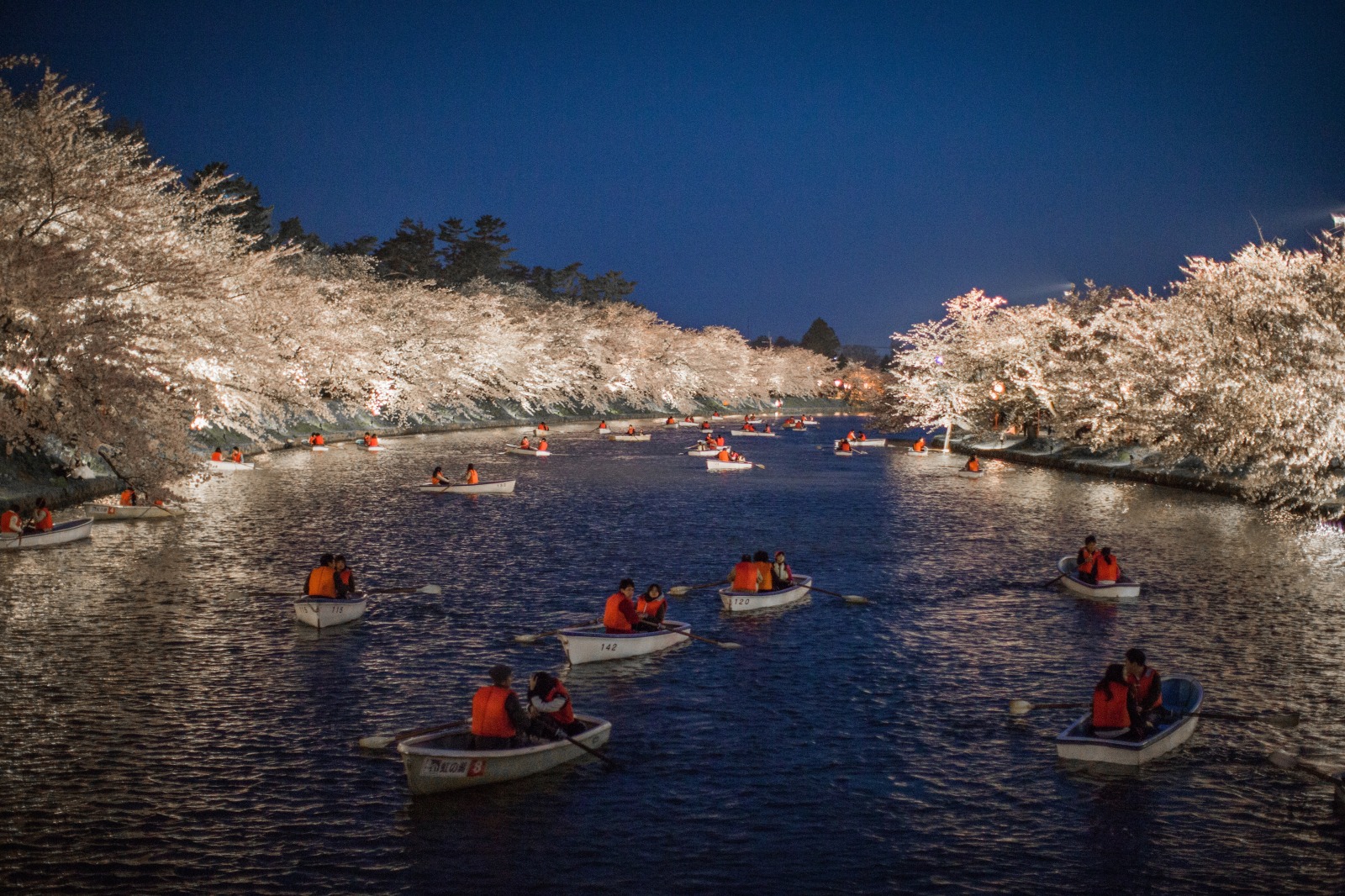Hirosaki Cherry Blossoms are a Must-See

The cherry blossoms of Hirosaki Park are known as the best in Japan. They hit peak perfection during the national Golden Week holiday in May, bringing over two million visitors from all over Japan and abroad. The park is the home to 2,600 cherry trees of over 50 different varieties including somei yoshino, shidarezakura (weeping cherry), and yaezakura (double-layer cherry).
There are more than 300 old trees that are over 100 years old.
Hirosaki's cherry trees boast an overwhelming number of blossoms.
Visitors coming to the park during the full bloom season encounter an astonishing number of cherry blossoms. This is because each branch produces four to five flowering buds—even as many as seven buds on one branch isn’t unheard of—resulting in voluminous cherry trees fully laden with flowers.
Typically, somei yoshino cherry trees live an average of 60 years. There are over 300 trees in Hirosaki Park that have lived for more than 100 years; and over 1,200 of these trees have lived for 60 years or more. They continue to entertain people with their ephemeral springtime beauty.
In contrast to ambitious young trees that grow by lengthening their branches upwards, venerable trees grow wider as their branches stretch to the side; this has an effect of the branches drooping their blossom-loaded arms down to visitors’ eye level. Trees along the old castle moat even touch the water’s surface. The combination of voluminous flowers with the elegance and majesty of the old trees make the cherry blossoms of Hirosaki Park very special. On top of that, historical structures such as the tenshukaku tower produce a refined atmosphere that can only be seen at Hirosaki Park.
The miraculous technique that broke new ground
The cherry blossoms at Hirosaki Park are unique due to a special apple-pruning technique that has been used for over 130 years. Though pruning branches of cherry trees was once unthinkable, the cherry trees of Hirosaki Park were pruned by adapting the techniques used on apple trees. Thus it stablished a Hirosaki-style that invigorates the cherry tree. This Hirosaki-style pruning has received attention from all over Japan and spread across the nation. The revolutionary Hirosaki-born technique is now being used as a standard in Japan and abroad.
In addition to professional groups, sakura mamori (cherry blossom protectors), citizen tourist guides, and volunteers all maintain the park together to preserve the best cherry blossoms in Japan.
The oldest somei yoshino of Japan
Hirosaki Park has many cherry blossom highlights that must not be missed. The view of the tenshukaku surrounded by flowers in full bloom, the scarlet Gejo Bridge, and the western moat that is famous for the Sakura Tunnel are well-known sightseeing spots here. Visiting the tenshukaku, sightseers can look upon Mount Iwaki—a symbol of Hirosaki—that appears to float on clouds of cherry blossoms and creates a spectacular view.
At night during the Cherry Blossom Festival, the park is illuminated. Visitors have the chance to enjoy the romantic and bewitching atmosphere that contrasts with the daytime. Explore the park and search for the many unique cherry trees such as Japan’s oldest centenarian Somei Yoshino tree; the Otakizakura tree named by artist Shiko Munekata; the Hirosaki Yoshino; and the Hirosaki Yuki Akari.
Witness a moving castle
At the foundation of Hirosaki Castle Honmaru, the stones are beginning to weaken and protrude outward. The last renovation of the stone base was more than 100 years ago and involved a 10-year-long process. Plans are in motion to repair the foundation once more! The castle tower will be moved 70 meters (229 feet) northwest without disassembling. Unfortunately, this means that the sight of the Gejo Bridge, tenshukaku, and moat together will not be possible for some time (estimated 2025). We welcome you to enjoy the story of the century and see history as it happens.
- Hirosaki Park









